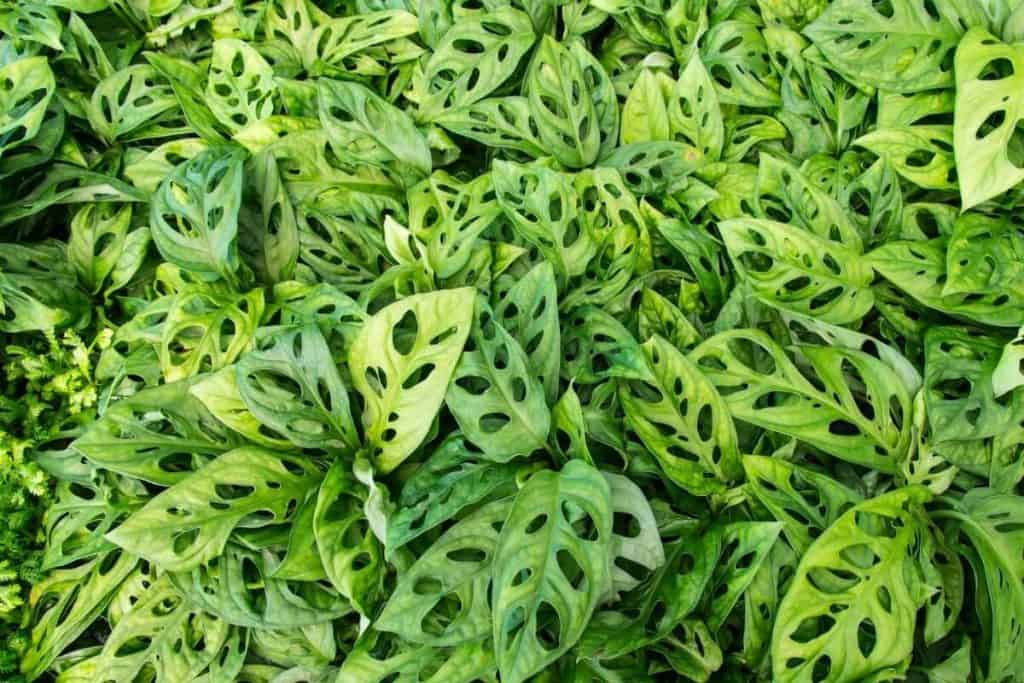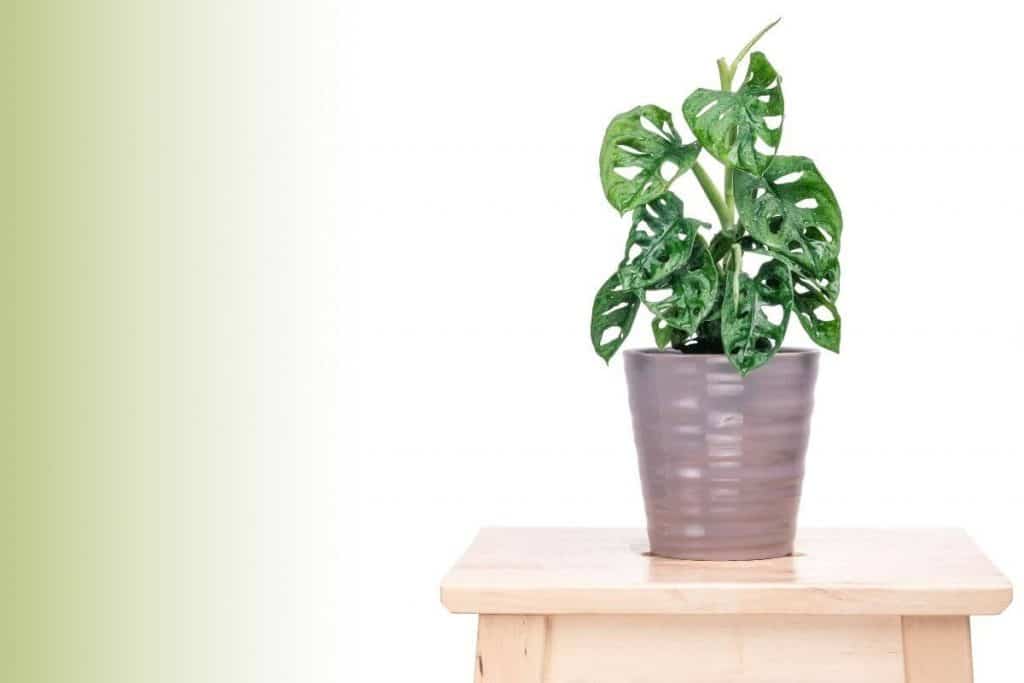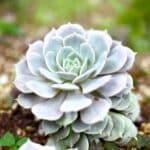Are you a garden lover and wish to add Monstera Obliqua to your collections? Well, that's not a bad idea, as the Monstera Obliqua is a very attractive indoor plant that can add beauty to your home or office.
It consists of about 48 flowering plant species and is a green climbing plant that grows only a few meters high.
However, before you own a Monstera Obliqua, there's a need to understand how to maintain or care for it. Each plant has its growth pattern and care, including the Monstera Obliqua.
This article will highlight the monstera obliqua care factors mentioned above, including its water, lighting, and temperature requirements, amongst others.
Table of Contents
Easy Monstera Obliqua Care and Growing Tips
If you’ve ever wanted to learn how to grow and care for monstera oblique plant, below is all the guides you will need to grow this beautiful houseplant.
Monstera Obliqua Natural Habitat
Monstera Obliqua lives in a temporary (fast-changing habitat), often at sea level, and dwells among roots on the lower section of bigger trees.
And since it is not a big climber, it grows mature on small trees. Its dwarf-sized nature is an advantage because it can use a substrate not seen in other plants.
It is also epiphytic. In other words, it can grow on top of other plants and absorb moisture and nutrients from the air, debris, rain, and water.
Meanwhile, its geographical distribution ranges from Panama to Southern America. You can also locate it in Costa Rica, Peru, and along the Amazon.
Also, due to the widespread geographical reason, the Monstera Obliqua can't often be seen. It might be because it is being overlooked so much since it is considered one of the smallest Monstera species, if not the smallest.
Related Post: Does Monstera Like Humidity?
Light Requirements

Monstera Obliqua thrives in bright natural light, and it will do best when receiving bright indirect sunshine.
However, direct sun will burn and destroy its foliage and cause the flexible, thin leaves to wear out. Therefore, there's a need to keep your plant away from direct sunlight.
Due to its thick leaves, adult Monstera Obliqua can tolerate at least 3 hours of direct sunlight. Monstera Obliqua plant is used to high humidity levels of up to 90%, as well as a deep jungle canopy to protect them from the negative effects of direct sunlight.
Again, because it naturally grows in forests, it needs a fair amount of light, but it should never be direct sunlight. If you plan to keep it on the patio, you can keep the pot in a sheltered location, mostly when the intensity of sunlight is at its excessive point.
As an indoor gardener, you have the advantage of protecting your plants easier, as you can keep the pot close to the window so it stays partially in the shade or on a shelf in a bright room.
By so doing, it will receive the adequate sunlight it requires for proper growth, without fear of damage.
Immediately you discover the light from the window damaging the leaves; you can cover the windows with white curtains. They will help filter the sun rays and reduce their intensity, to prevent them from any burning risk.
Are you one of those gardeners that are finding it hard with dark rooms that lack sufficient sunlight? You can still grow a healthy Monstera Obliqua.
All you require is to find a nice LED lamp and place it close to the plant, and it will thrive. Meanwhile, when choosing a lamp, always go for one that allows you to set the intensity of the light.
Monstera Obliqua Watering Requirements
Watering the Monstera Obliqua is one of the most challenging care factors because you have to be very careful to avoid excessive watering while also checking out for insufficient water.
In other words, you will need to water regularly but avoid overwatering to prevent the plant from drying out.
But the challenge is often the question of how long the pause between two watering should be? Well, once you have gotten your plant (Monstera Obliqua), and you put it in the pot, ensure the soil's surface is moistened.
You can then put your finger in the pot to check if the bottom layer is a little less moist than the top but still moist; if so, it means you have added the sufficient water it demands.
You can always watch out for most of the soil for the next few days using the same method; with that, you will know if it needs watering or not.
However, once you find out that the bottom layers of the soil are dry, that means it will need to be watered again. The length of time between two watering is a few days, although it can sometimes change depending on the season and humidity.
For instance, you might be required to water the plant more often in the winter and summer periods.
The temperature during that period is hot, humidity is low, and water easily extinguishes. You might be required to water it just one or two times a week in the winter seasons.
However, every watering depends on the condition of the Monstera Obliqua, which is why you must always try to pay attention to it, to know when the watering and other care factors are required. Meanwhile, proper compost and soil could help you out with watering.
Related Post: Philodendron Vs Monstera
Monstera Obliqua Humidity & Temperature Needs

Humidity-wise, you won't find any particular condition you must meet for the Monstera Obliqua because every area has its humidity level.
For instance, in the forests of Brazil, there are high temperatures and humidity; therefore, you can place the plant close to the bathroom or a kitchen.
However, if you find it hard to keep to this condition, you have nothing to worry about, as your plant will do well even when there's no extra humid air.
But you need to watch out for the soil moisture content as often as possible, then look at the leaves and if you discover that the air is too dry, mist the plant. That alone should be enough for its healthy growth.
Again, you can attempt to keep your Monstera Obliqua in a room with a humidifier. With a few adjustments as the seasons goes by, your plant can grow healthy even outdoors.
In the spring and summer seasons, you can place the pot on your patio, and when the winter comes, you take it to a warmer location indoors.
Temperature-wise, just as with lightning, the temperature is easier to control indoor. The ideal temperature for Monstera Obliqua ranges between 15 to 20 degrees Celsius. Remember, the best is always around the 20 figure mark before bringing it to 15 degrees Celsius.
Meanwhile, these conditions are easily met with greenhouses, where the temperature can be easily held constant.
If there are no available greenhouses, you can keep the plant in a room with a thermostat where the temperature is closely monitored, especially in the winter season, as this plant will wear off when the temperature goes below 4 degrees Celsius.
Monstera Obliqua Soil Needs
Using suitable soil is another essential care factor soil, and without the proper growing mix, getting the best result from the Monstera Obliqua and other plants will be challenging.
The Monstera Obliqua has specific soil requirements and needs to be planted in a well-drained peat-based potting mix, with perlite and bark and rich in nutrients.
First, you must ensure the soil has the ideal pH and ensure it is a little acidic but not going under 5. If you are not too comfortable with the acidic nature of the plant, you can apply the safest alternative, which is to leave it at 7.
Again, make sure that the soil is dependent on peat. This peat can be created or purchased online. The peat is essential as it helps reserve water, causing the plant to absorb most of it. Another essential soil ingredient is Loam.
Loam will produce few air pockets that will enable the roots to sprout and reach all the nutrients.
It's also possible for the soil to contain other parts like coconut coir that will help to retain water. Organic soils are usually the best option, while sandy and dry soils are not suitable for it.
Fertilization Needs For Monstera Obliqua
Fertilizing the Monstera Obliqua is very tricky, as you will have to check the slow-release feeding tendency of its soil before you buy or even feed it.
Several peat-based soils possess this variety of fertilizer, and the plant doesn't have to be fertilized for a few months after potting or repotting.
Immediately it exceeds this time; you are free, to begin with fertilizing. Meanwhile, Monstera Obliqua's ideal response is to liquid fertilizers that are mixed with water.
The 20-20-20 fertilizers produce the perfect results, and one tablespoon dissolved in one gallon of water is just okay for it.
However, while fertilizing, do not apply on the base. Ensure you give a few centimeters above it and carry out the feeding process again after a few weeks.
In the spring and summer seasons, you will need to feed it more often than not. In the winter season proper, you can stop feeding it.
Talking about the fertilizer composition, there's a need to ensure that it doesn't have excess salts. Artificial fertilizer with excessive salt dries out the plant and destroys the roots.
This plant doesn't need fertilizers for growing, but they encourage the process and help to develop the root and leaves.
Yet, failure to apply fertilizers will hamper the growth rate, and the plant won't produce bigger leaves, although it will remain healthy, which is the most important.
Planting (Potting & Repotting) of Montera Obliqua

At some point, you will need to move the Monstera Obliqua into a larger pot. Meanwhile, it has a stunted growth system; hence, a slow grower might take up to a few months before you can report.
Often, most gardeners consider the root system before they decide whether to repot or not.
You can pull the plant to one side using your fingers before moving the soil, but you've to be gentle with it to avoid damaging the plant or the roots.
The roots still have enough room to grow at times, so you must be patient with them before repotting.
It may take almost a year for the plant and roots to overgrow the pot in some situations. Therefore, before repotting the plant, ensure that the new container supports the plant and its requirements.
It should also possess drainage holes and be deep enough. The depth of the pot is essential when you are using a stake.
Fill a third of the pot with soil and place the plant. When adding the rest of the soil, ensure it covers the roots, but give a space of about a few centimeters between the first leaves and soil.
Also, endeavor to surround the stake with good soil, as it will help to keep the plant firm and support its growth.
Regarding the kind of soil that is suitable after repotting, you are free to repeat the previous soil you were using before the repotting process.
Peat-based soils are highly recommended, but if you can find any other variety that is perfect for your plant, then you can go ahead with it.
After putting the plant in the pot, ensure you water the top layer of the soil and continue with regular feeding. This plant possesses a mid-height, and once you've discovered it is outgrowing its space, trim it and use the cuttings to grow fresh plants.
How to Prune Monstera Obliqua
Regular pruning of Monstera Obliqua won't be quite necessary because they are slow growers, yet you can help to control its growth and trim off any dead or damaged leaves while they appear with the use of sterilized pruning shears.
Related Post: Philodendron Golden Goddess Care
How to Propagate Monstera Obliqua
Propagation refers to the multiplication of plant collection from cuttings of the parent plant. Monstera Obliqua can be propagated through stolon propagation or stem cuttings.
However, propagation by stem cutting is usually the easiest method of the two, particularly for inexperienced gardeners of Monstera Obliqua. The following are the steps required to propagate by stem cutting;
- Hold on until it is the growing season before you can start propagating.
- Take 5-7 inch stem cutting using at least two nodes on each of them.
- Plant each of the cuttings in a pre-prepared pot and water as often as required.
- Give a space of few weeks for development and avoid the use of fertilizers.




